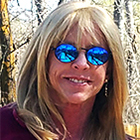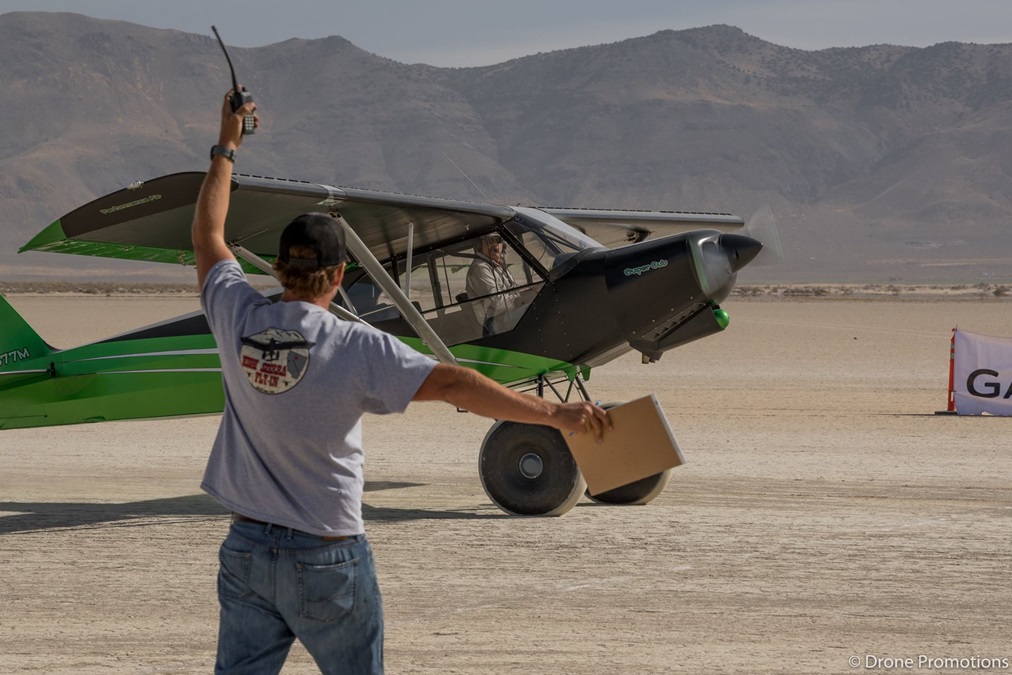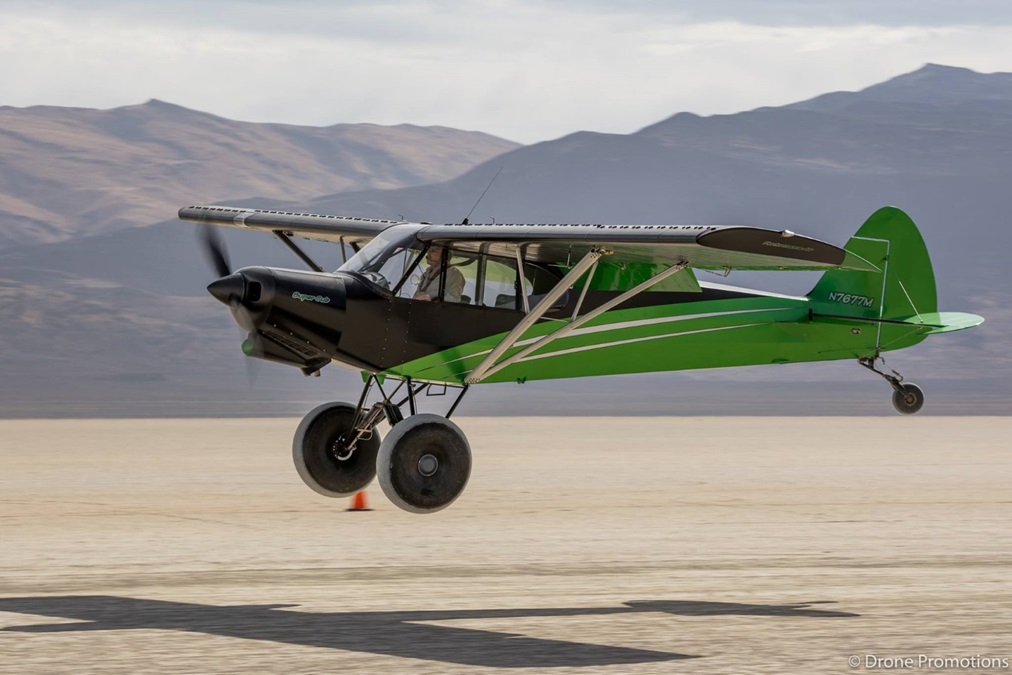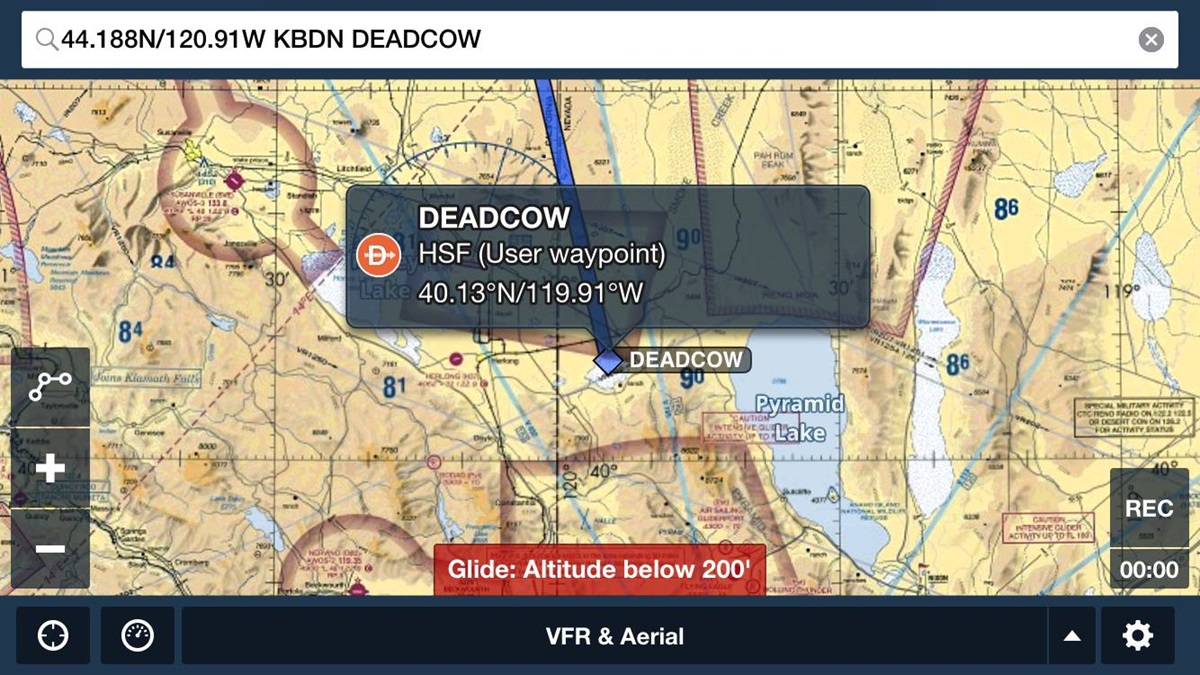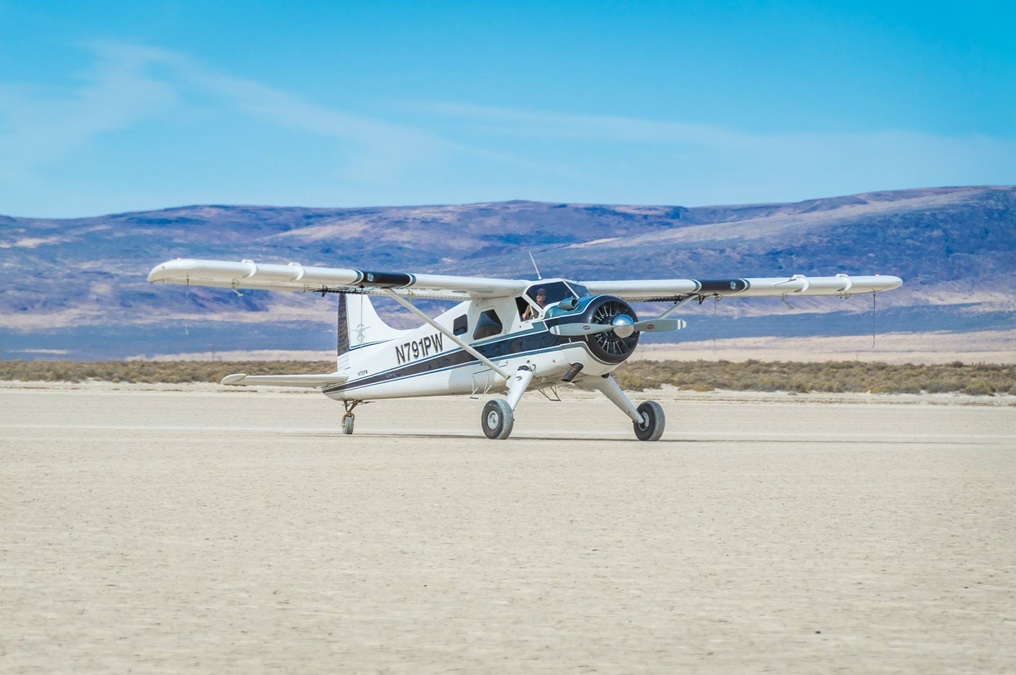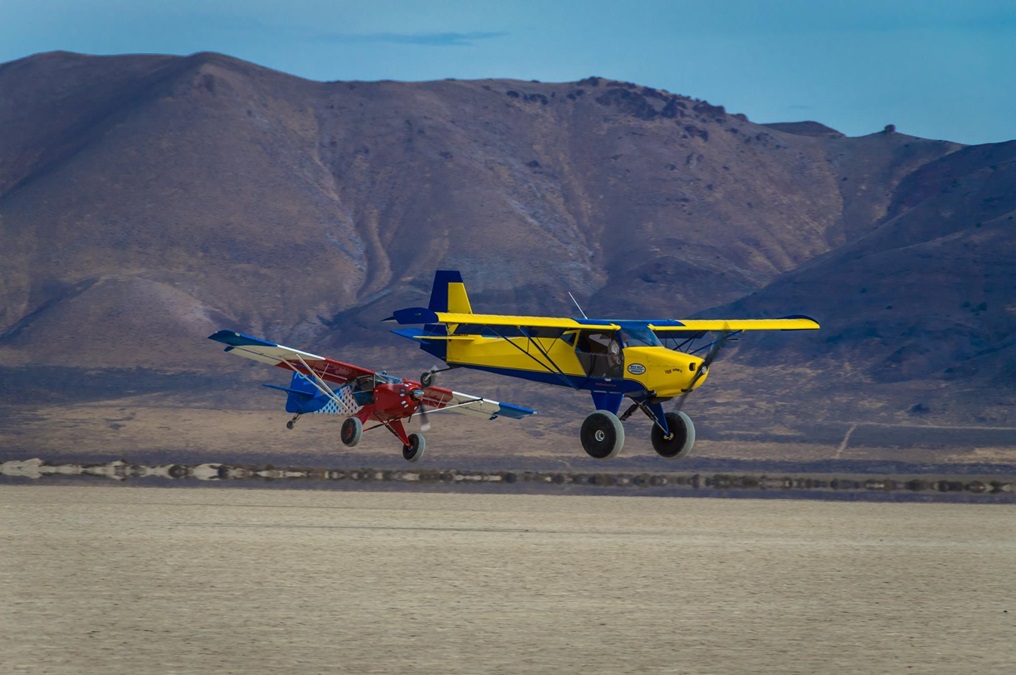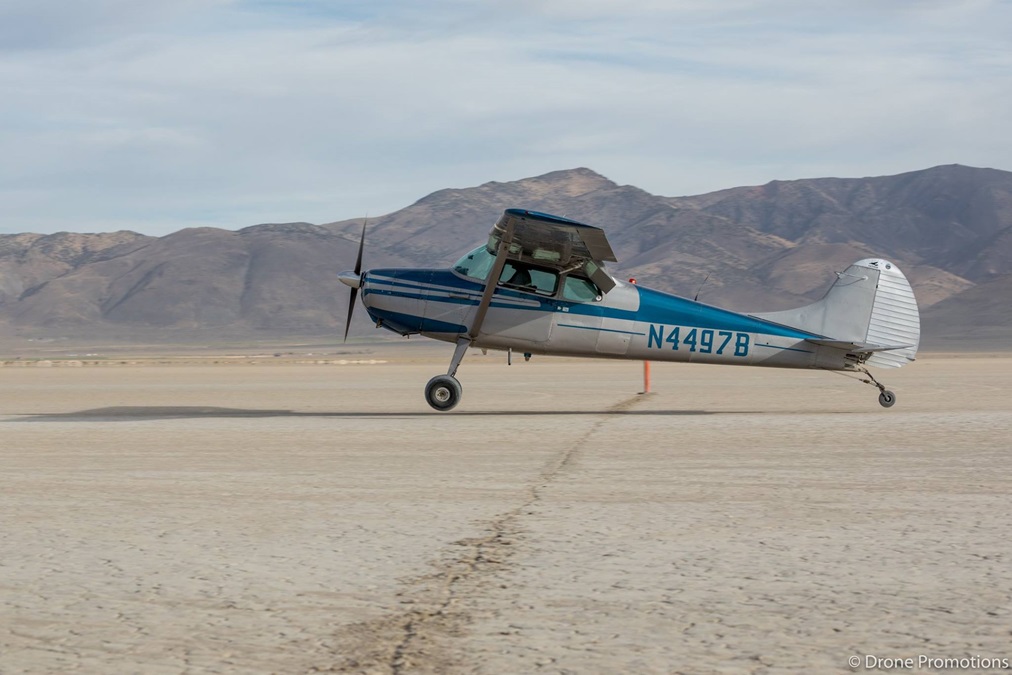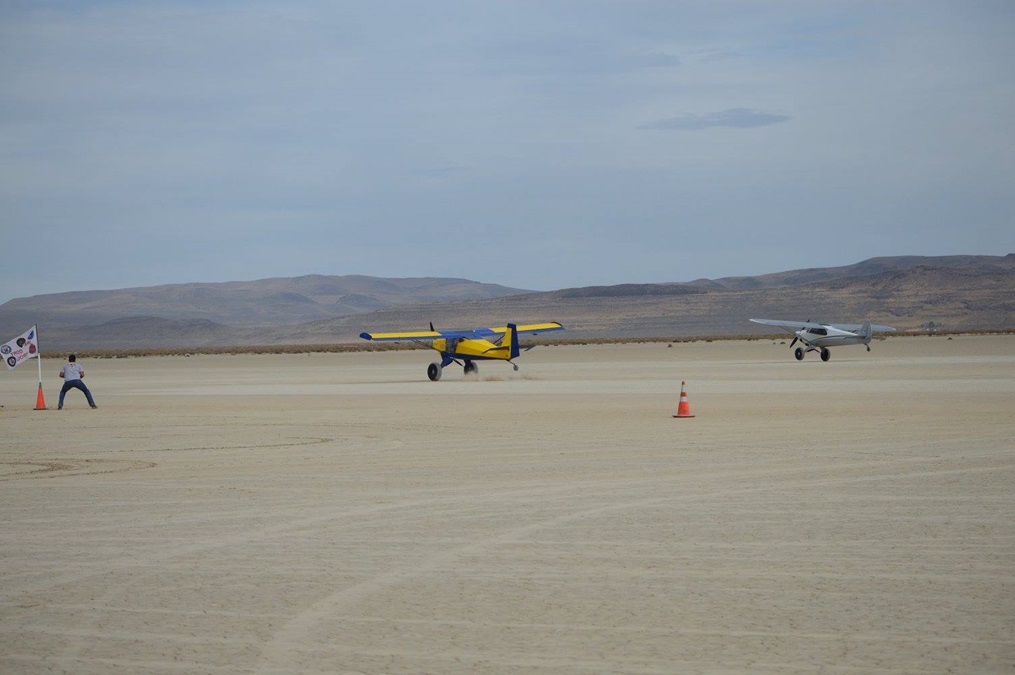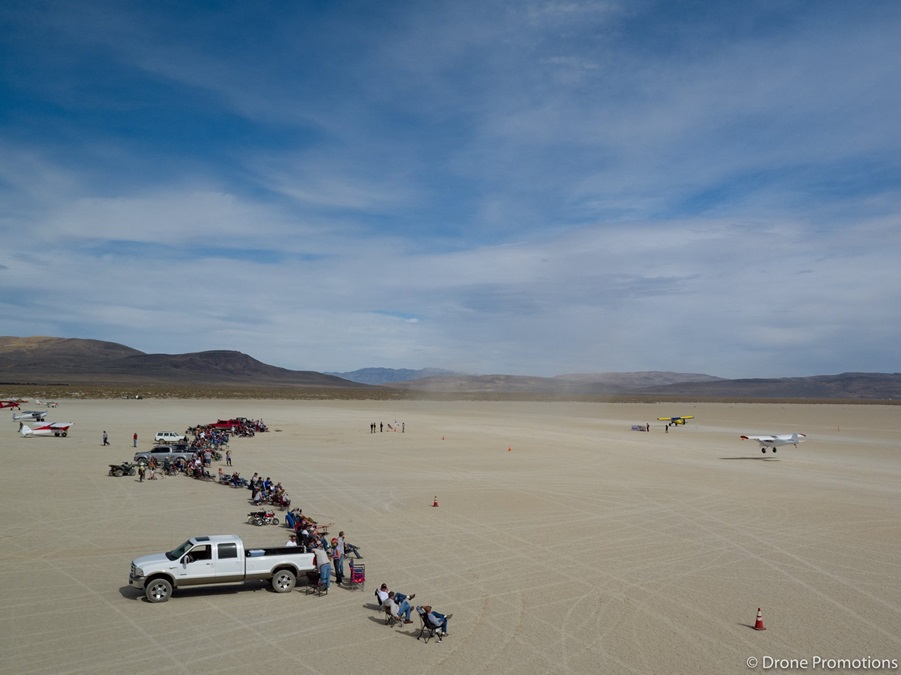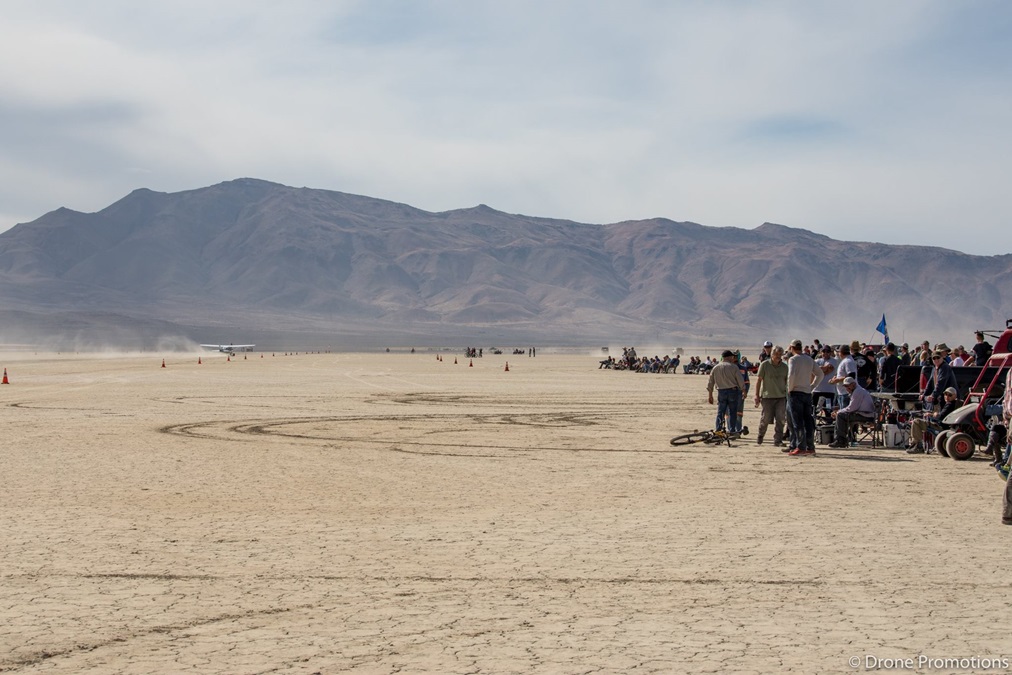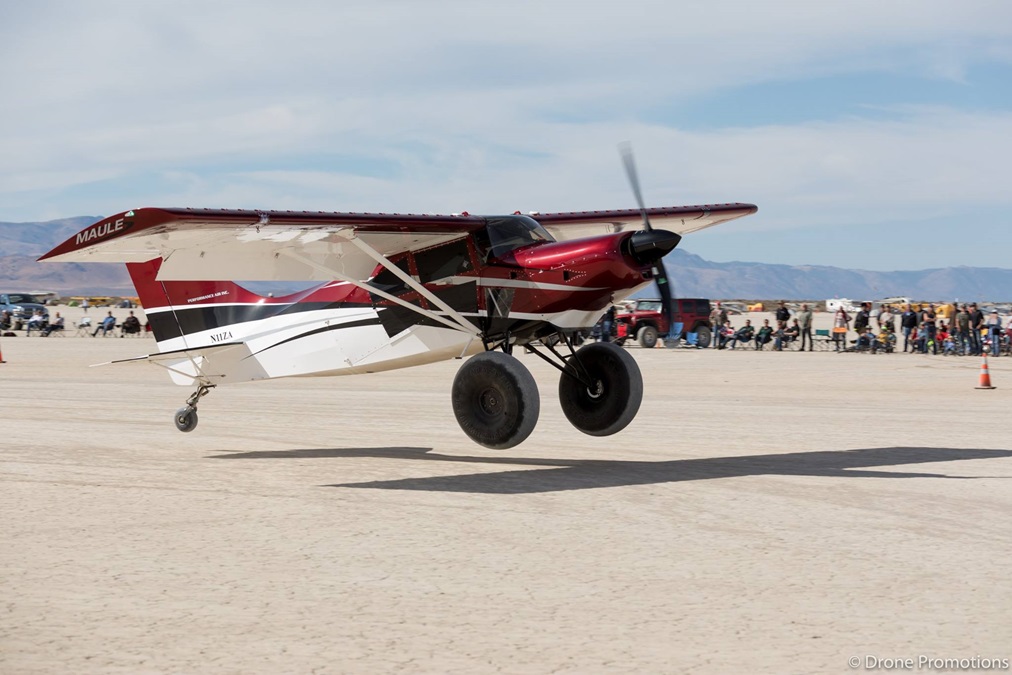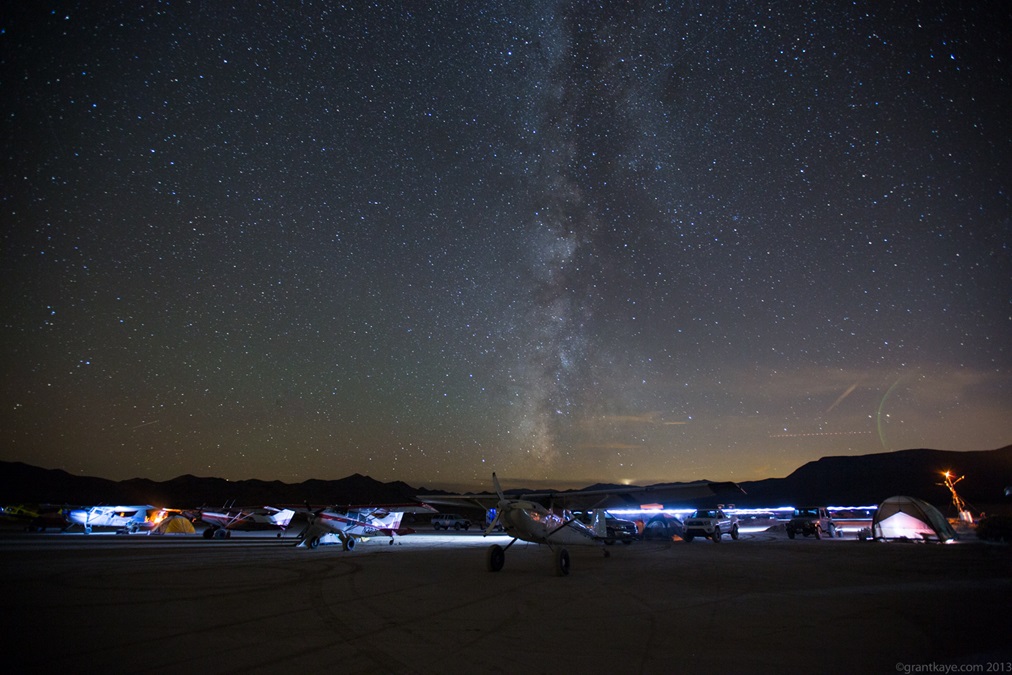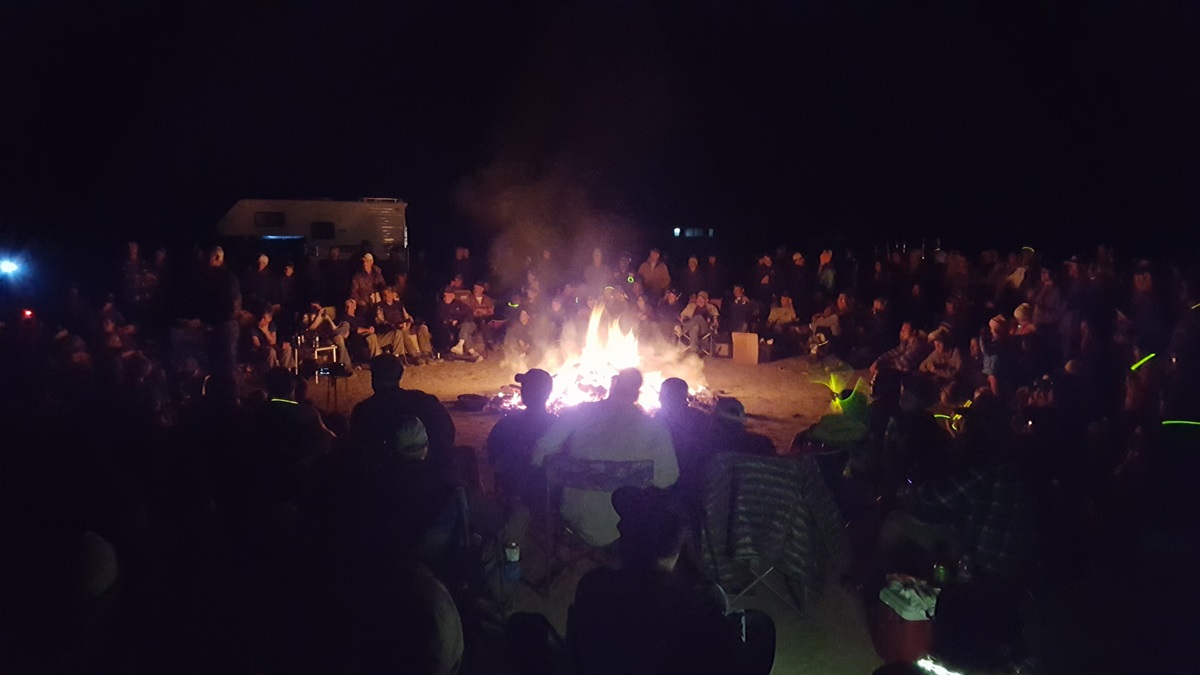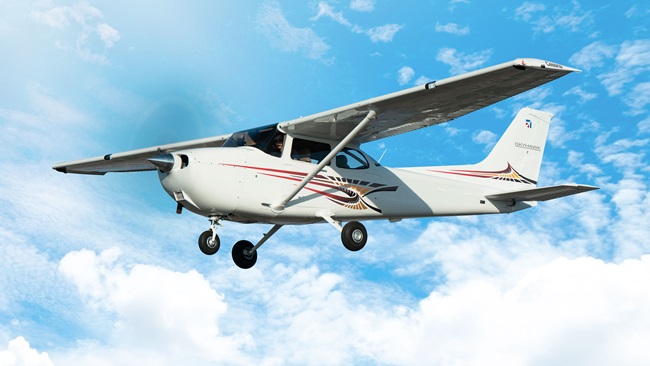High Sierra Fly-In: Desert drag racing—with airplanes
Once a year, a dry lakebed in the Nevada desert changes overnight from a desolate expanse to a party zone. Is it Burning Man? No—this is way more fun. This is the High Sierra Fly-In, at Dead Cow Lakebed. For one weekend each year, hundreds of pilots gather to celebrate their freedom to fly, to land in seemingly impossible places, and to compete—in airplane drag racing.
The High Sierra Fly-In takes place each October. Airplanes of all types are encouraged. Pilots bring their kids and friends to give them a taste of the camaraderie that develops so quickly between people here. Many pilots string their airplanes with Christmas lights, adding to the festive nighttime atmosphere. There’s a free barbecue Saturday night and breakfast Sunday morning. Spend the evenings around the large bonfire exchanging stories with your new friends, but make sure you get some sleep, because morning will bring plenty of flying, from STOL contests to fly-outs that can challenge even the most accomplished bush pilot.
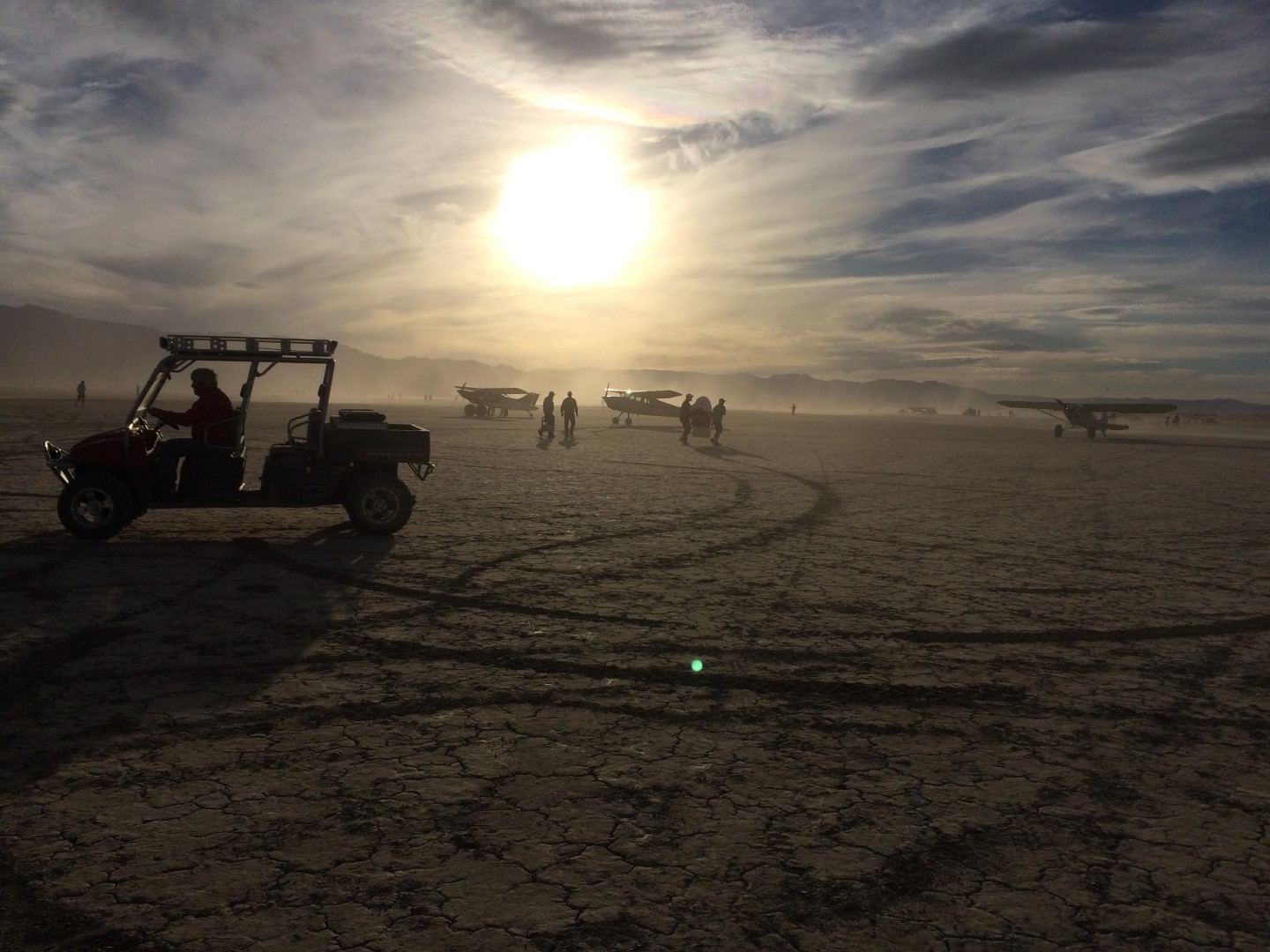
Dead Cow Lakebed lies 30 nautical miles north of Reno/Stead Airport, halfway between Pyramid Lake and Amedee AAF (AHC) and its co-located Amedee VOR-DME (AHC,109.0 MHz). The landing site is in the northern section of the lakebed at 40° 13' N 119°91' W, or 13 DME on the AHC 111° radial. The approach end of the northeast/southwest 3,000-foot airstrip, composed of hard dirt, is marked by two rows of red flags. You’ll pull your airplane well off to the side and set up camp beside it. Playa dust is a way of life here, so get used to it and wash your airplane when you get home.
Quinn generally conducts an extensive briefing for the day’s activities around the campfire at 7 a.m. Safety is uppermost in his mind. Several years ago, a midair collision marred the event, a circumstance no one cares to repeat. Bring pencil and paper to write down frequencies and procedures for the day’s fly-out. Quinn knows the area like the back of his hand and will lead pilots to a variety of landing spots. While aloft, pilots will be informed if the landing area is suitable for small-wheeled aircraft like a Cirrus. One such example is landing at the site of the annual Burning Man Festival, where you can still see traces of roads traversed a couple of months earlier by tens of thousands of revelers.
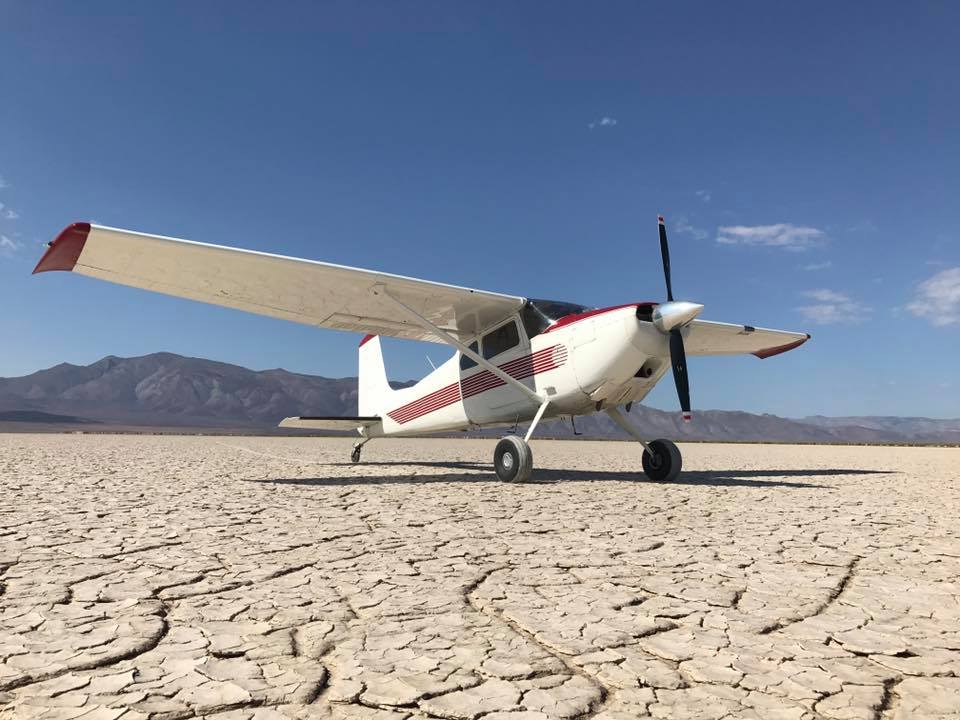
Other landing spots are demanding, to say the least. “High Boy” is basically a 400-foot-long trail at a performance-robbing 9,100 feet elevation, uphill, and with a bump big enough to launch you airborne again if you touch down before it. Then there’s “Tailwheel Ridge,” at 7,800 feet, where Quinn blew a few tailwheels before mastering ops here. Bring your swimsuit in case you stop at the hot spring, a short flight from the fly-in (you land on an adjacent dirt road). Other landing sites include grass strips, lake beds, an old gold mine, and dirt roads. Pilots fly in formation between destinations; copilots can watch for traffic in the air and wild horses on the ground. Fuel stops are usually at Nervino or Susanville.
Back at Dead Cow Lakebed, there’s an event you won’t want to miss: STOL drag races. See the photo captions for how these work; they’re a blast! Other events might include a watermelon drop. At night, fireworks and a giant bonfire light up the sky. Many pilots donate cash or via PayPal to Quinn, as the fly-in costs him thousands to put on, with the firewood/works, porta-potties, prizes, food, beer, T-shirts, and other expenses. To get a taste of the fun and energy, go to YouTube and type in High Sierra Fly-In. Better yet, fly out yourself and be part of the fun!
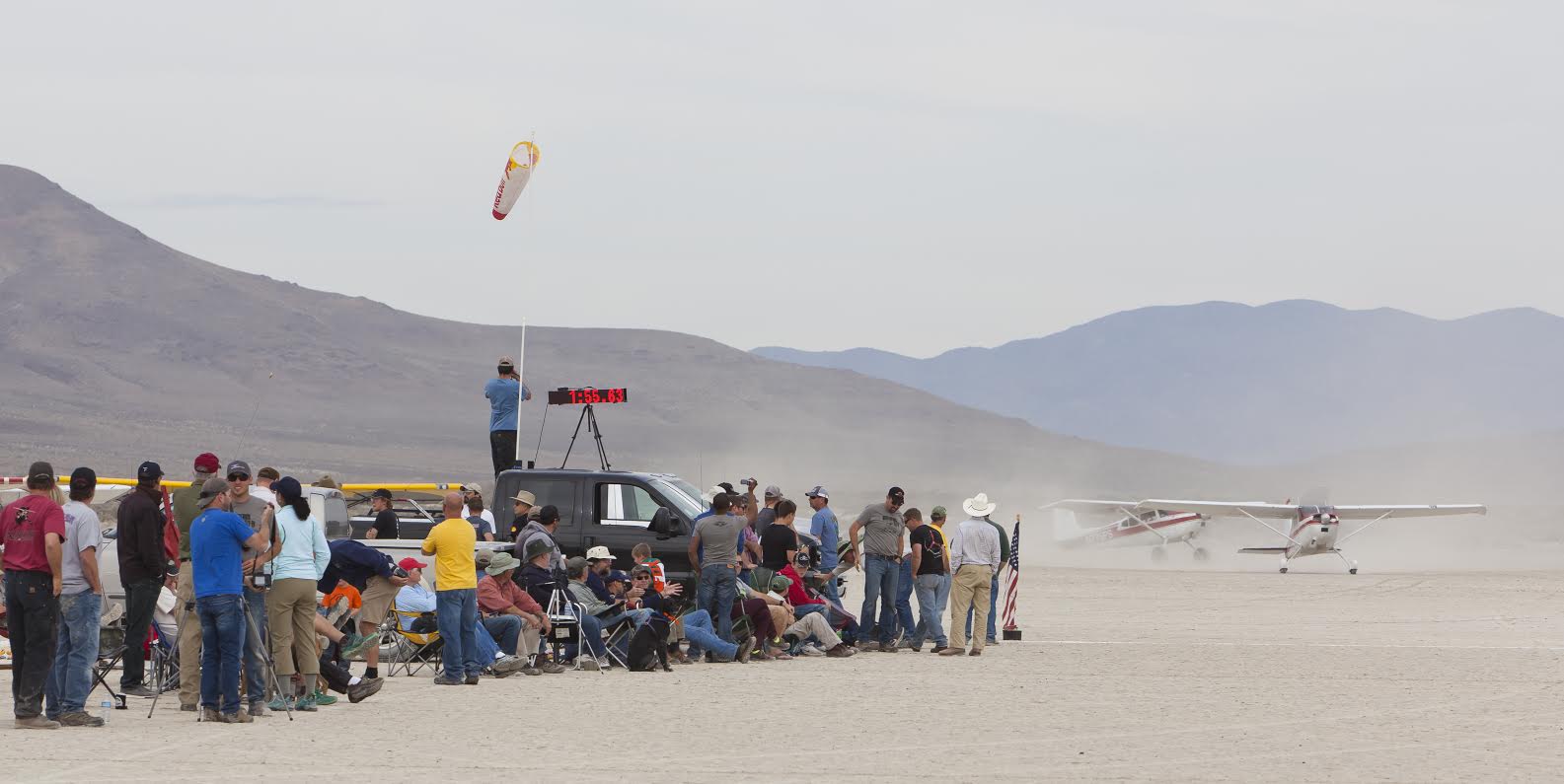
Share your favorite destination in the AOPA Hangar: Places to fly, things to do, where to eat!
